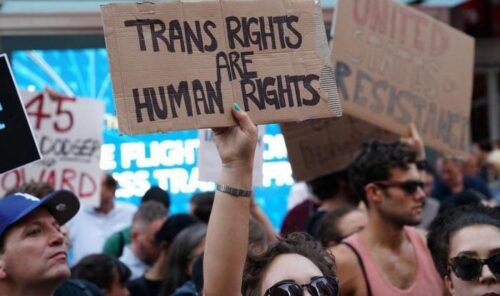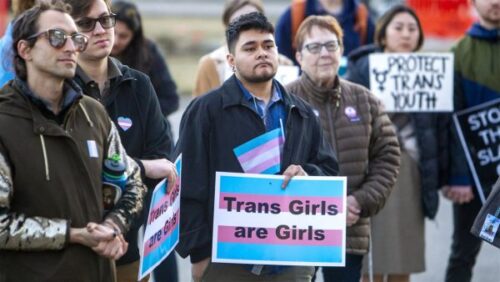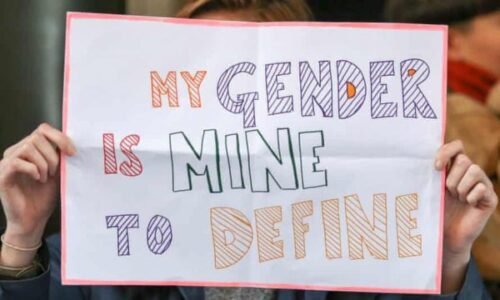The very word is chilling, but has become normalised political currency in Denmark. Since 2010, the Danish government has resorted to generating “ghetto lists” marking out areas as socially problematic for the state. In 2018, the country’s parliament passed “ghetto” laws to further regulate the lives of individuals inhabiting various city areas focusing on their racial and ethnic origins. The legislation constitutes the spear tip of the “One Denmark without Parallel Societies – No Ghettos in 2030” initiative; its target: “non-Western” residents who overbalance the social ledger by concentrating in various city environs.
The “ghetto package”, comprising over 20 different statutes, grants the government power to designate various neighbourhoods as “ghettos” or “tough ghettos”. That nasty formulation is intended to have consequences for urban planning, taking into account the percentage of immigrants and descendants present in that area of “non-Western background”. One Danish media outlet, assiduously avoiding the creepier elements of the policy, saw it as the “greatest social experiment of the century.”
Bureaucrats consider the following: the number of residents (greater than 1,000); a cap of 50% of “non-Westerners”; and whether the neighbourhood meets any two of four criteria, namely employment, education, income and criminality. Doing so enables the authorities to evict residents, demolish buildings and alter the character of the neighbourhood, a form of cleansing that has shuddering historical resonances. Central to this is an effort to reduce the stock of “common family housing” – 40% in tough ghettos by 2030 – supposedly available to all based on principles of affordability, democracy and egalitarianism.
The problematic designation of people of “non-Western background” is also a bit of brutal public policy. It is a discriminatory measure that has concerned the UN Committee on Social, Economic and Cultural Rights (CESCR) and the Council of Europe’s Advisory Committee on the Framework Convention for the Protection of National Minorities (ACFC). In its concluding observations on the sixth periodic report of Denmark from 2019, the CESCR urged the country’s adoption of “a rights-based approach to its efforts to address residential segregation and enhance social cohesion.” This would involve the scrapping of such terms as “ghetto” and “non-Western” and the repeal of provisions with direct or indirect discriminatory effects “on refugees, migrants and residents of the ‘ghettos’.”
The use of “descendants” also suggests the importance of bloodline that would have seemed entirely logical to the Nazi drafters of the Nuremberg Laws. The German laws, announced in 1935, made no reference to the criteria of religion in defining a “Jew”, merely the importance of having three or four Jewish grandparents. Doing so roped those whose grandparents had converted to Christianity and the secular. First came the sentiments; then came the laws.
This irredeemable state of affairs has solid, disturbing implications, though both the CESCR and ACFC tend to be almost mild mannered in pointing it out: You did not belong and you cannot belong. It is less an integrating measure than an excluding one. Denmark’s “Ghetto Package”, as the ACFC puts it, “sends a message that may have a counter-effect on their feeling of belonging and forming an integral part of Danish society.” It also urged that Denmark “reconsider the concepts of ‘immigrants and descendants of immigrants of Western origin’ and ‘immigrants and descendants of immigrants of non-Western origin’.”
For its part, the Ministry of Interior and Housing finds the package all above board, a mere matter of statistical bookkeeping. Using “non-Western” as a marker adopted to distinguish the EU states, the UK, Andorra, Iceland, Liechtenstein, Monaco, Norway, San Marino, Switzerland, the Vatican State, Canada, United States, Australia and New Zealand. “All other countries,” the Ministry curtly observed in a statement, “are non-Western countries.”
Last year, Mjølnerparken, a housing project in Copenhagen’s Nørrebro area, became the subject of intense interest in the application of the Ghetto laws. With 98 percent of the 2,500 residents being immigrants or the children of immigrants, a good number hailing from the Middle East and Africa, the “tough ghetto” designation was a formality. Apartment sales were promised, effectively threatening the eviction of the tenants.
These actions were proposed despite ongoing legal proceedings against the Ministry of Interior and Housing by affected residents. Declaratory relief is being sought, with the applicants arguing that the measures breach the rights to equality, respect for home, property and the freedom to choose their own residence.
Three rapporteurs from the United Nations also warned that the sale should not go ahead as litigation was taking place. “It does not matter whether they own or rent all residents should have a degree of security of tenure, which guarantees legal protection against forced eviction, harassment and other threats.”
Such policies tend to consume the reason for their implementation. Disadvantage and stigmatisation are enforced, not lessened. Former lawmaker Özlem Cekic suggests as much. “It is not only created to hit the Muslim groups and immigrant groups but the working class as well. A lot of people in the ‘ghettoes’, they don’t have economic stability.”
The Ministry has reacted to the protests with proposals that ostensibly reform the legal package. The word “ghetto”, for instance, will be removed and the share of people of non-Western background in social housing will be reduced to 30% within 10 years. Those moved out of the areas will be relocated to other parts of the country. According to Nanna Margrethe Kusaa of the Danish Institute for Human Rights, “the ethnicity criteria has a more sharpened focus on it than before.” Officials have merely refined the prejudice in one of Europe’s most troubling instances of ethnic engineering. To this, Cekic has an ominous warning: “How can you expect [immigrants] to be loyal to a country that doesn’t accept them as they are?”
This post was originally published on Radio Free.





